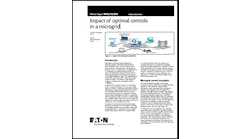Virtual power plants may be invisible, but we are going to increasingly feel their influence worldwide within the decade, according to findings by Navigant Research.
A recent report by the research firm says that virtual power plant (VPP) capacity will quintuple, producing 28,000 MW by 2023, up from from 4,800 MW this year. This means growth in vendor revenue from today’s $1.1 billion to $5.3 billion in nine years, under a base scenario.
Exactly what constitutes a VPP depends on whose definition you use. We often talk about VPPs as aggregated energy efficiency measures or demand response that reduces the need to build generation and transmission. Navigant defines them more specifically as “software and IT innovations to achieve the optimum usage of grid assets while maintaining the proper balance of the electricity grid.”
Why the growth in VPPs? As Navigant points out, several trends contribute, among them:
- Increased use of smart meters and other smart grid technologies that better enable VPPS
- Additions of intermittent renewable generation to the grid (VPPs can add stability)
- Emerging markets for ancillary services
As distributed energy becomes a larger part of the grid, VPPs can help create an “energy cloud” business model. This allows anyone, anywhere to buy and sell energy services on an open market, Navigant says.
“Combining a rich diversity of independent resources into a network via sophisticated planning, scheduling, and bidding of distributed generation-based services, virtual power plants have the potential to harness and distribute electricity in ways hardly envisioned just a few years ago,” says Peter Asmus, principal research analyst with Navigant Research. “In order to make these markets work, though, rules need to be established to allow these transactions to flow back and forth across a common carrier grid.”
Demand response is the most well-known part of the VPP world today, Navigant says. The US grid is the dominant market for demand response, but it is gaining some traction in Europe and Asia Pacific too,
The market end goal, Navigant says, is creation of “the mixed asset VPP,” which bring together distributed generation and demand response “to provide a synergistic sharing of grid resources.”






